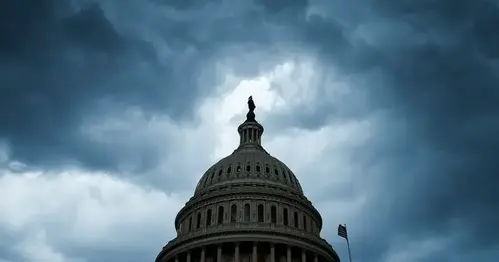
Everything you need to know ahead of a government shutdown
WASHINGTON — The U.S. is headed toward a government shutdown this weekend unless Congress takes action soon. Government funding expires when the clock strikes 12:01 a.m. Sunday, and lawmakers are still divided over spending levels and whether to give more aid to Ukraine.
As Congress debates a plan, government operations that Americans rely on and paychecks for millions of federal workers hang in the balance.
Veterans Affairs faces staffing shortages ahead of government shutdown
Sept. 26, 202303:03Here is what you need to know about what a government shutdown is and how it could affect you.
What is a government shutdown?
The Constitution gives Congress the power of the purse, meaning all government funding decisions take place on Capitol Hill. Each year Congress must pass spending bills before Oct. 1, the start of a new fiscal year, or the government runs out of money to keep functioning.
If Congress fails to act before the end of September, there will be a lapse in funding, and all nonessential government functions must stop.
We’d like to hear from you about how you’re preparing for a possible government shutdown, whether you might be out of work or feel the effects of shuttered services. Please contact us at [email protected] or reach out to us here.
How did Congress get to this point?
If you know the song “I’m Just a Bill” from “Schoolhouse Rock!” then you may remember that bills start in committees before making it to the House or Senate floor for a vote. This is how the government spending process is designed to work. Appropriations committees in both chambers are supposed to pass a dozen spending bills that cover different federal agencies. Then the bills must pass both the full House and Senate before going to the president’s desk to be signed into law.
If Congress runs out of time to finish this process, which happens often, lawmakers can pass a short-term funding extension, to give themselves more time to hash out a full-year deal. While both House and Senate leadership have signaled that they want to pass a short-term bill, called a continuing resolution or CR, neither chamber has done so yet.
Often, Congress will package a few or all of the 12 spending bills together into what is called an “omnibus” spending bill and pass that. House Speaker Kevin McCarthy, R-Calif., has repeatedly said he would never go down this route.
Conservative demands for spending cuts in the House have led to the current stalemate. During debt ceiling negotiations, House Republicans struck a deal with the White House to establish spending caps for the next two years; that was designed to avoid a shutdown fight this fall. But seeking to appease the most conservative members of his party, McCarthy let House appropriators mark up spending bills below the caps that they had agreed on with the Biden administration.
So far, the House has only passed one of the 12 funding bills on the floor. The Senate has passed none. On two occasions last week, a small faction of conservatives blocked GOP leaders from bringing the Defense Department appropriations bill — usually an easy one to pass since it funds the military — to the floor for debate, as they demanded additional cuts.
When would a shutdown begin? How long could one last?
In the absence of last-minute action from Congress, a shutdown would start at 12:01 a.m. on Oct. 1. It is difficult to predict how long a shutdown could last, given divisions on Capitol Hill. Republicans have a narrow majority in the House, and the Senate is controlled by Democrats.
There are even disagreements just among House Republicans, with some maintaining they will never vote for a continuing resolution to keep the government open, arguing that Congress does this too often and that they should focus on passing the 12 spending bills. But that process usually takes weeks or months, not days.
What parts of the government would be affected by a shutdown?
During a shutdown, the federal government would be unable to pay its 4 million employees. Hundreds of thousands of these government workers could be furloughed, meaning they would temporarily stop going to work. During a 2013 shutdown, about 850,000 workers were furloughed. These workers would receive retroactive pay when the government reopens, something that was not always guaranteed until Congress passed a law following a 2019 shutdown.
Some functions of the government would continue, including the military and public safety, with those employees working without pay. Each federal agency creates a “contingency plan” of how to operate during a shutdown and which employees are “excepted” from being furloughed. The Defense Department plan, for example, states that active-duty military personnel will continue to report for duty during a shutdown.
President Joe Biden and members of Congress would all continue to work and be paid, as required by law.
Does a shutdown affect benefits and payments like Social Security?
Social Security checks that go out to 67 million Americans every month would continue during a shutdown as this is considered “mandatory” spending and not funded through the dozen appropriations bills that Congress is supposed to pass each year.
Other examples of mandatory spending that would continue include payments from Medicare, Medicaid, Temporary Assistance for Needy Families and veterans’ benefits.
How long did the longest government shutdown last?
Congress has allowed funding to lapse several times in the past four decades, leading to 20 shutdowns that lasted at least one full day.
The longest shutdown was also the most recent: The government shut down for 34 full days from Dec. 21, 2018, to Jan. 25, 2019.
Source: https://www.nbcnews.com/politics/congress/government-shutdown-everything-need-to-know-rcna117203







